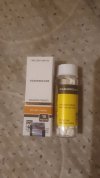Navigation
Install the app
How to install the app on iOS
Follow along with the video below to see how to install our site as a web app on your home screen.
Note: This feature may not be available in some browsers.
More options
Style variation
You are using an out of date browser. It may not display this or other websites correctly.
You should upgrade or use an alternative browser.
You should upgrade or use an alternative browser.
MESO-Rx Sponsor RoidTeam - European Distributor
- Thread starter RoidTeam - EU Distributor
- Start date
Wholesale offers are still on! We are constantly looking for partners
Examples of prices that start from 1000 eur order.
Testosterone P - 12 eur and lower
Winstrol oral - 14 eur and lower
Primobolan - 28 eur and lower.
Request Pricelist:
Email: sales@rt-support.com
Wickr: hilmabc
Telegram: HilmaBiocareSupport
Examples of prices that start from 1000 eur order.
Testosterone P - 12 eur and lower
Winstrol oral - 14 eur and lower
Primobolan - 28 eur and lower.
Request Pricelist:
Email: sales@rt-support.com
Wickr: hilmabc
Telegram: HilmaBiocareSupport
Toni72
Banned
.tri_tren hilma ,very best .
Thanks for your ffeedback. Really glad you like our products. You ordered only TrenMix?.tri_tren hilma ,very best .
guys you also cant add likes anymore?
antanisblindo
New Member
hi hilma,
Do you know when Winstrol-Depot will be back in stock?
Do you know when Winstrol-Depot will be back in stock?
Hello sir, unfortunately i dont have exact dates. We have only this product in out of stock status for very long time and i cant say that return of it is a question of few months.hi hilma,
Do you know when Winstrol-Depot will be back in stock?
Glad you have same good experience as always my friend, hope to get a review on the usage experience also
Introduction to testosterone and why it is the mainstay of the course?
Anabolic steroids are a class of drugs that contain a synthetically manufactured form of the testosterone hormone or a related compound derived from that hormone (or similar in structure and action). In order to fully understand how anabolic steroids work, it is important to understand the basic principles of testosterone.
Testosterone is the main male sex hormone. It is produced by Leydig cells in the testicles in varying amounts throughout a man's life. The impact of this hormone becomes most evident during puberty, when increased testosterone production causes dramatic physiological changes in the male body. This includes the appearance of secondary male characteristics such as a deep voice, growth of body and facial hair, increased fat production by the sebaceous glands, development of the genitals, maturation of sperm, and increased libido. Indeed, the male reproductive system will not function properly if testosterone levels are low. All of these effects are considered to be masculinizing or "androgenic" properties of this hormone.
Increased testosterone production also causes growth-promoting or "anabolic" changes in the body, including an increased rate of protein synthesis (which leads to muscle accumulation). It is testosterone that makes men have more muscle mass than women, as the amount of this hormone varies greatly between the sexes. More specifically, the adult male body produces between 2.5 and 11 mg per day, while the female body produces about 114 mg. We want to tell you right away that the figures may differ in different books, because of the abundance of studies, as well as different units of calculation. The dominant sex hormone in women is estrogen, which has a significantly different effect on the body. Among other things, low levels of androgen and high levels of estrogen cause women to accumulate more fat, less muscle tissue, have shorter stature, and are more prone to weakened bones as they age (osteoporosis).
The actual mechanism by which testosterone causes these changes is somewhat complicated. When free in the bloodstream, the testosterone molecule can interact with various cells in the body. These include skeletal muscle cells, as well as skin, scalp, kidney, bone, central nervous system, and prostate cells. Testosterone binds with a cell target in order to show its activity, and thus it affects only those cells of the body which have the corresponding hormone receptor (in particular, the androgen receptor). This process can be compared to a lock and key system, where each receptor (lock) is activated only by a certain type of hormone (key). During this interaction, the testosterone molecule binds to the intracellular receptor site (located in the cytoplasm, not on the membrane surface), forming a new "receptor complex". This complex (hormone + receptors) then migrates to the cell nucleus, where it attaches to a specific section of the cell's DNA, called the hormone response element. This activates the transcription of certain genes, which in the case of the skeletal muscle cell ultimately causes (among other things) an increase in the synthesis of two major contractile proteins, actin and myosin (muscle growth). Under the action of androgens, the carbohydrate storage in muscle tissue can also increase.
After this exchange process is completed, the complex is released, the receptor and the hormone separate. They are then free to migrate back into the cytoplasm for further activity. The testosterone molecule is also free to diffuse back into the circulation and interact with other cells. The entire receptor cycle, including hormone binding, migration of the receptor-hormone complex, gene transcription, and subsequent return to the cytoplasm, is a slow process, taking hours rather than minutes. For example, in studies using a single injection of nandrolone, it has been found that 4 to 6 hours pass before free androgen receptors migrate back into the cytoplasm after activation. It is also suggested that this cycle involves the cleavage and formation of new androgen receptors after they return to the cytoplasm, which is a possible explanation for the many observations that androgens are involved in the formation of their own receptor sites.
In the kidneys, the same process allows androgens to enhance erythropoiesis (production of red blood cells). It is this effect that leads to increased red blood cell concentrations and possibly an increased ability to carry oxygen during anabolic/androgenic steroid therapy. Many athletes mistakenly believe that oxymetholone and boldenone are unique in this ability, in part maybe. However, because of the specific use or mention of this effect in the drug literature. In fact, stimulation of erythropoiesis occurs with almost all anabolic/androgenic steroids, as this effect is simply due to activation of the androgen receptor in the kidney cells. The only real exception may be compounds such as dihydrotestosterone and some of its derivatives, which are rapidly degraded by interaction with alpha-hydroxysteroid dehydrogenase enzymes (renal tissue has a similar distribution of enzymes to muscle tissue), and therefore show low activity in these tissues.
Adipose (fatty) tissues are also sensitive to androgens, and here these hormones maintain the lipolytic (fat mobilizing) capacity of the cells.This can be accomplished through androgen-related regulation of beta-adrenergic receptor concentration or general cellular activity (via adenylate cyclase). Also note that the level of androgens in the body closely correlates (inversely) with the level of accumulated fat. When the level of androgenic hormones decreases, body fat deposition tends to increase. Similarly, when androgen levels increase, body fat may be consumed at a greater rate. The ratio of action of androgens to estrogens is actually the most important, since estrogen plays the opposite role, increasing fat deposition in many places. Thus, if you want to lose fat while taking steroids, estrogen levels must be low. This is clearly evidenced by the fact that non-aromatizing steroids have always been preferred by bodybuilders looking to increase relief and muscle, while aromatizing compounds are usually used in training phases to gain muscle mass because of their tendency to increase body fat deposition. Aromatization is discussed in more detail in the next section of estrogen so it is not worth hitting this issue briefly.
As already mentioned, testosterone also causes androgenic activity, which occurs through the activation of receptors in tissues considered to be androgen-sensitive (often through prior conversion to dihydrotestosterone.) These include the sebaceous glands, which are responsible for the secretion of sebum. As androgen levels increase, so does the secretion of fat. As the oil secretion increases, the likelihood of clogged pores increases (it's understandable why acne is such a common side effect of steroid use). The appearance of body and facial hair is also associated with the activation of androgen receptors in the tissues of the skin and scalp. This becomes most noticeable during puberty in boys, when testosterone levels rise rapidly and androgen activity begins to stimulate the growth of body and facial hair. Later in life and in the presence of a genetic predisposition, androgen activity in the scalp can also contribute to the onset of male-type hair loss. However, it is a misconception that dihydrotestosterone is the separate culprit for hair loss; in fact, general androgen receptor activation is to blame. Glandular function and libido are also linked to androgen activity, as are many other areas of the central nervous/neuromuscular system.
Anabolic steroids are a class of drugs that contain a synthetically manufactured form of the testosterone hormone or a related compound derived from that hormone (or similar in structure and action). In order to fully understand how anabolic steroids work, it is important to understand the basic principles of testosterone.
Testosterone is the main male sex hormone. It is produced by Leydig cells in the testicles in varying amounts throughout a man's life. The impact of this hormone becomes most evident during puberty, when increased testosterone production causes dramatic physiological changes in the male body. This includes the appearance of secondary male characteristics such as a deep voice, growth of body and facial hair, increased fat production by the sebaceous glands, development of the genitals, maturation of sperm, and increased libido. Indeed, the male reproductive system will not function properly if testosterone levels are low. All of these effects are considered to be masculinizing or "androgenic" properties of this hormone.
Increased testosterone production also causes growth-promoting or "anabolic" changes in the body, including an increased rate of protein synthesis (which leads to muscle accumulation). It is testosterone that makes men have more muscle mass than women, as the amount of this hormone varies greatly between the sexes. More specifically, the adult male body produces between 2.5 and 11 mg per day, while the female body produces about 114 mg. We want to tell you right away that the figures may differ in different books, because of the abundance of studies, as well as different units of calculation. The dominant sex hormone in women is estrogen, which has a significantly different effect on the body. Among other things, low levels of androgen and high levels of estrogen cause women to accumulate more fat, less muscle tissue, have shorter stature, and are more prone to weakened bones as they age (osteoporosis).
The actual mechanism by which testosterone causes these changes is somewhat complicated. When free in the bloodstream, the testosterone molecule can interact with various cells in the body. These include skeletal muscle cells, as well as skin, scalp, kidney, bone, central nervous system, and prostate cells. Testosterone binds with a cell target in order to show its activity, and thus it affects only those cells of the body which have the corresponding hormone receptor (in particular, the androgen receptor). This process can be compared to a lock and key system, where each receptor (lock) is activated only by a certain type of hormone (key). During this interaction, the testosterone molecule binds to the intracellular receptor site (located in the cytoplasm, not on the membrane surface), forming a new "receptor complex". This complex (hormone + receptors) then migrates to the cell nucleus, where it attaches to a specific section of the cell's DNA, called the hormone response element. This activates the transcription of certain genes, which in the case of the skeletal muscle cell ultimately causes (among other things) an increase in the synthesis of two major contractile proteins, actin and myosin (muscle growth). Under the action of androgens, the carbohydrate storage in muscle tissue can also increase.
After this exchange process is completed, the complex is released, the receptor and the hormone separate. They are then free to migrate back into the cytoplasm for further activity. The testosterone molecule is also free to diffuse back into the circulation and interact with other cells. The entire receptor cycle, including hormone binding, migration of the receptor-hormone complex, gene transcription, and subsequent return to the cytoplasm, is a slow process, taking hours rather than minutes. For example, in studies using a single injection of nandrolone, it has been found that 4 to 6 hours pass before free androgen receptors migrate back into the cytoplasm after activation. It is also suggested that this cycle involves the cleavage and formation of new androgen receptors after they return to the cytoplasm, which is a possible explanation for the many observations that androgens are involved in the formation of their own receptor sites.
In the kidneys, the same process allows androgens to enhance erythropoiesis (production of red blood cells). It is this effect that leads to increased red blood cell concentrations and possibly an increased ability to carry oxygen during anabolic/androgenic steroid therapy. Many athletes mistakenly believe that oxymetholone and boldenone are unique in this ability, in part maybe. However, because of the specific use or mention of this effect in the drug literature. In fact, stimulation of erythropoiesis occurs with almost all anabolic/androgenic steroids, as this effect is simply due to activation of the androgen receptor in the kidney cells. The only real exception may be compounds such as dihydrotestosterone and some of its derivatives, which are rapidly degraded by interaction with alpha-hydroxysteroid dehydrogenase enzymes (renal tissue has a similar distribution of enzymes to muscle tissue), and therefore show low activity in these tissues.
Adipose (fatty) tissues are also sensitive to androgens, and here these hormones maintain the lipolytic (fat mobilizing) capacity of the cells.This can be accomplished through androgen-related regulation of beta-adrenergic receptor concentration or general cellular activity (via adenylate cyclase). Also note that the level of androgens in the body closely correlates (inversely) with the level of accumulated fat. When the level of androgenic hormones decreases, body fat deposition tends to increase. Similarly, when androgen levels increase, body fat may be consumed at a greater rate. The ratio of action of androgens to estrogens is actually the most important, since estrogen plays the opposite role, increasing fat deposition in many places. Thus, if you want to lose fat while taking steroids, estrogen levels must be low. This is clearly evidenced by the fact that non-aromatizing steroids have always been preferred by bodybuilders looking to increase relief and muscle, while aromatizing compounds are usually used in training phases to gain muscle mass because of their tendency to increase body fat deposition. Aromatization is discussed in more detail in the next section of estrogen so it is not worth hitting this issue briefly.
As already mentioned, testosterone also causes androgenic activity, which occurs through the activation of receptors in tissues considered to be androgen-sensitive (often through prior conversion to dihydrotestosterone.) These include the sebaceous glands, which are responsible for the secretion of sebum. As androgen levels increase, so does the secretion of fat. As the oil secretion increases, the likelihood of clogged pores increases (it's understandable why acne is such a common side effect of steroid use). The appearance of body and facial hair is also associated with the activation of androgen receptors in the tissues of the skin and scalp. This becomes most noticeable during puberty in boys, when testosterone levels rise rapidly and androgen activity begins to stimulate the growth of body and facial hair. Later in life and in the presence of a genetic predisposition, androgen activity in the scalp can also contribute to the onset of male-type hair loss. However, it is a misconception that dihydrotestosterone is the separate culprit for hair loss; in fact, general androgen receptor activation is to blame. Glandular function and libido are also linked to androgen activity, as are many other areas of the central nervous/neuromuscular system.
helo
New Member
Been using the Test E for a bit, have had some issues with it though. Either swelling or just bad PIP, other than that the oil is decent. Used Hilma's Anavar too at 50mgs a day, didn't feel it that much just was a bit more fuller and vascular.
Maybe individual intolerance. What dosage are you using?Been using the Test E for a bit, have had some issues with it though. Either swelling or just bad PIP, other than that the oil is decent. Used Hilma's Anavar too at 50mgs a day, didn't feel it that much just was a bit more fuller and vascular.
helo
New Member
Anything above 0.4mls even after heating the oil up gives me terrible PIP, I pinned a ml this morning in my VG and dont think ill be able to walk without limping for a few days. As for the Anavar I tried dosages up to 70mgs but it was still very mild. Ive tried different batches of the Test E but unless this next vial im gonna open doesn't get rid of the PIP I will be switching labs.Maybe individual intolerance. What dosage are you using?
trengod1992
Well-known Member
It can be due to the carrier oil, also test e raws the past 5 years or so have caused pip. It could be due to the production of the raws in china.Anything above 0.4mls even after heating the oil up gives me terrible PIP, I pinned a ml this morning in my VG and dont think ill be able to walk without limping for a few days. As for the Anavar I tried dosages up to 70mgs but it was still very mild. Ive tried different batches of the Test E but unless this next vial im gonna open doesn't get rid of the PIP I will be switching labs.
helo
New Member
Ive used other labs with sesame oil too without problems. It could be the raws but ive used different batches of the Test E from hilma.It can be due to the carrier oil, also test e raws the past 5 years or so have caused pip. It could be due to the production of the raws in china.
Products Of The Week
15% DISCOUNT
1.Cut Stack / Cut MIX by Hilma Biocare
2.Drostanolone E by Hilma Biocare
3.Turinabol by Hilma Biocare
4.Tamoxifen Citrate by Hilma Biocare
 Expires on: 12/2/2023
Expires on: 12/2/2023
Subscribe for our channel to get all the treats
15% DISCOUNT
1.Cut Stack / Cut MIX by Hilma Biocare
2.Drostanolone E by Hilma Biocare
3.Turinabol by Hilma Biocare
4.Tamoxifen Citrate by Hilma Biocare
Subscribe for our channel to get all the treats
Code:
www.t.me/thebbpowercomCreativeClaws
New Member
You do not deliver to Denmark? (it's not on the list when trying to place an order)
Unfortunately we cant guarantee delivery to Denmark. thats why its not in the list.You do not deliver to Denmark? (it's not on the list when trying to place an order)
We can place the order manually without delivery guarantee, but success rate is low.
musclemc
New Member
Order just came in February 8th, ordered on December 22nd. The shipping was longer than I expected, I will know for next time.
Customer service was fantastic, but make sure to stay on top of your order. My order was just sitting because they were out of test cyp and I didn't realize that. Once I asked what was going on, they quickly filled me in and changed my order to test e.
I am excited to use.
Customer service was fantastic, but make sure to stay on top of your order. My order was just sitting because they were out of test cyp and I didn't realize that. Once I asked what was going on, they quickly filled me in and changed my order to test e.
I am excited to use.
Attachments
Similar threads
- Replies
- 83
- Views
- 2K
- Replies
- 833
- Views
- 64K
- Replies
- 89
- Views
- 7K
- Replies
- 94
- Views
- 6K
- Replies
- 48
- Views
- 2K





